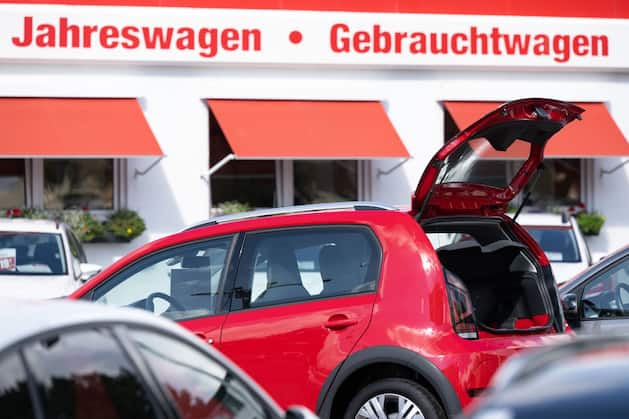Record prices in a completely overheated market – used cars are currently more expensive than ever. But now there are increasing signs that the market is about to turn around. Should buyers wait or still strike now?
According to experts, several leading indicators indicate that the price increase for used cars will soon be stopped. You can see that, among other things, in the development on the US market, which is considered a good indicator for other markets. “The risks are great and the plans of manufacturers, service providers and dealers are quickly thwarted. Profits are likely to shrink significantly”, according to the “Automobilwoche”.
Several car trade experts and associations surveyed by the trade journal believe that the record prices on the market cannot be maintained. “A look at the average residual values shows how hot the market has been. In the past year and a half, they have increased by almost 15 percentage points for three-year-old used vehicles. While the residual values in June 2021 were still 54.2 percent of the new list price, they were 68.7 percent at the beginning of January 2023. But since then they’ve been slipping”, according to the “Automobilwoche”.
The so-called idle days have also increased from 91 to 97. This important indicator represents the number of days a car sits at the dealership before it is resold. The higher the number, the more difficult the market becomes for sellers.
The longer the dealers are stuck with their used vehicles, the greater the pressure to lower prices in order to get the vehicles off the yard. The trend is already foreseeable in the USA, with used car prices recently falling by almost 15 percent.
High inflation rates leave Americans with less money to buy cars; a development that can also be observed in Europe. Many experts assume that the last strong quarter of 2022 on the German car market was a flash in the pan. It was fueled above all by the reduction in electric purchase premiums from January 2023 – many purchases were probably brought forward to the end of 2022.
At the same time, the knots in new car production are slowly but surely loosening up. After the blockades caused by corona measures and delivery bottlenecks, more cars are being produced again. However, with the cost of living continuing to rise, retailers are not expecting demand to rise to the same extent. “In view of the rise in interest rates and the cost of living, we do not expect any improvement in 2023, but rather a further decline,” quotes the “Automobilwoche” from Alphartis boss Albrecht Wollensak. Alphartis is one of the largest car dealer groups in Germany. What means falling prices for used cars could mean for new cars: There are more discounts again.
Anyone who is currently toying with the idea of buying or selling a used car should think carefully about the next steps. For sellers, the golden age of extremely high sales prices should soon be over. It could therefore be advisable to quickly take the expiring high with you.
And the buyers? Although they can expect prices to fall, they should not only look at price developments, but also consider that the supply of popular petrol and diesel models is shrinking. The conversion of car manufacturers to e-cars has already significantly reduced the range of new vehicles with combustion engines.
And that will accelerate drastically, as a look at the manufacturer’s model plans shows. With a registration share of purely electric new cars of around 15 percent, the demand for combustion engines should not fall as quickly as the supply. The lack of new cars is then compensated by young used ones. So if you want your dream SUV with a diesel engine or the sporty sedan with a powerful six-cylinder engine, you should do it soon – otherwise the desired model will simply disappear from the (German) market.
Every year, TÜV, DEKRA and GTÜ check the defect rate of used cars with new statistics. FOCUS Online evaluates all available reports for you. Here you will find the most recent overviews from 2016.















